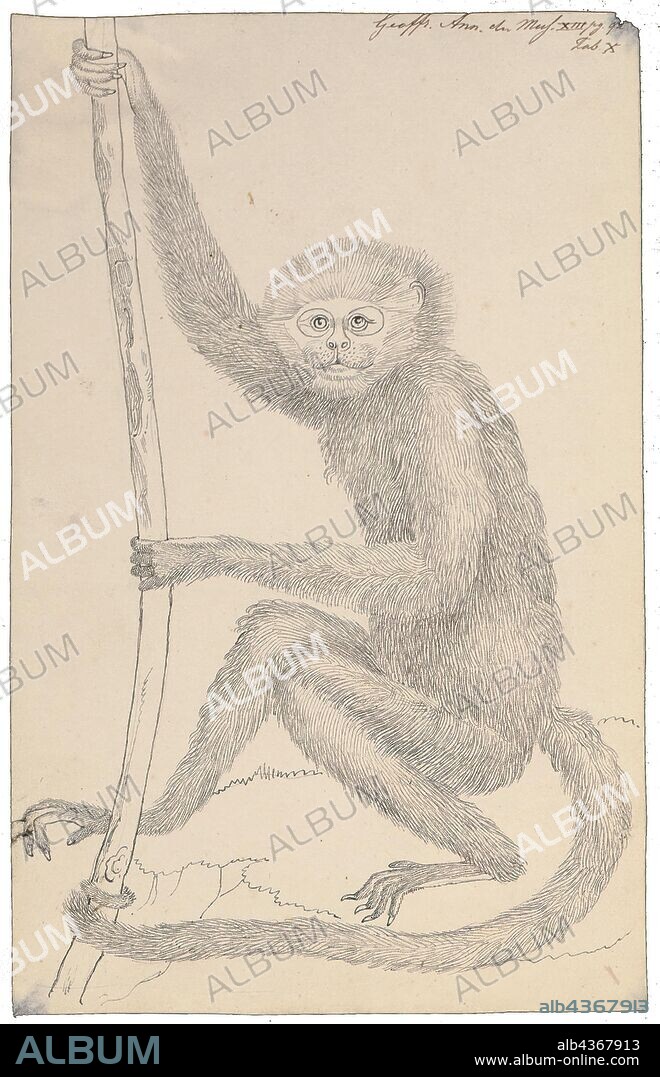alb4367913
Ateles marginatus, Print, The white-cheeked spider monkey (Ateles marginatus) is a species of spider monkey, a type of New World monkey, endemic to Brazil. It moves around the forest canopy in small family groups of two to four, part of larger groups of a few dozen animals. This monkey feeds on leaves, flowers, fruits, bark, honey and small insects, and it is an important means of seed dispersal for forest trees. Females give birth after a 230-day gestation period. The population of this monkey is decreasing as its forest habitat is lost to soybean production, deforestation and road construction. It is also regarded as a delicacy and hunted for food. For these reasons, the International Union for Conservation of Nature has assessed the animal's conservation status as being "endangered"., 1809.

|
Zu einem anderen Lightbox hinzufügen |
|
Zu einem anderen Lightbox hinzufügen |



Haben Sie bereits ein Konto? Anmelden
Sie haben kein Konto? Registrieren
Dieses Bild kaufen

Untertitel:
Siehe automatische Übersetzung
Ateles marginatus, Print, The white-cheeked spider monkey (Ateles marginatus) is a species of spider monkey, a type of New World monkey, endemic to Brazil. It moves around the forest canopy in small family groups of two to four, part of larger groups of a few dozen animals. This monkey feeds on leaves, flowers, fruits, bark, honey and small insects, and it is an important means of seed dispersal for forest trees. Females give birth after a 230-day gestation period. The population of this monkey is decreasing as its forest habitat is lost to soybean production, deforestation and road construction. It is also regarded as a delicacy and hunted for food. For these reasons, the International Union for Conservation of Nature has assessed the animal's conservation status as being "endangered"., 1809
Bildnachweis:
Album / quintlox
Freigaben (Releases):
Model: Nein - Eigentum: Nein
Rechtefragen?
Rechtefragen?
Bildgröße:
3338 x 5176 px | 49.4 MB
Druckgröße:
28.3 x 43.8 cm | 11.1 x 17.3 in (300 dpi)
Schlüsselwörter:
ABDRUCK • AFFE • BLUETEN • BLUME • BLUMEN • BRASILIEN • ESSEN • FRUECHTE • FRÜCHTE • HONIG • LANDWIRTSCHAFT • LAUB • LEBENSMITTEL • MAHLZEIT • NAHRUNGSMITTEL • NATUR • SPEISE • SPEISEN • STRASSENBAU • STRAßENBAU • VERIRRT • VERLOREN • VERPFLEGUNG • VIER • ZWEI
 Pinterest
Pinterest Twitter
Twitter Facebook
Facebook Link kopieren
Link kopieren Email
Email
